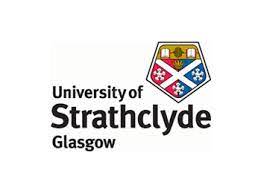University of Strathclyde: New global atlas maps out ocean areas most affected by light pollution
As coastal areas become increasingly built up, concerns are growing about levels of artificial light at night (ALAN) and its potential impacts on the marine environment.
Light pollution is well-studied in terms of its effects on the night sky and astronomy, and on terrestrial ecosystems, but until now researchers didn’t know the full extent of ALAN in the oceans.
A new study ‘A global atlas of artificial light at night under the sea’, funded by the Natural Environment Research Council, maps out areas of the ocean most affected by light pollution. It finds that up to 1.9 million km2 of the world’s coastal waters are being exposed to biologically significant levels of ALAN.
The study, published in open access in Elementa: Science of the Anthropocene, brought together researchers from the University of Strathclyde, Plymouth Marine Laboratory, the University of Plymouth, The Arctic University of Norway, Bar-Ilan University, The Interuniversity Institute for Marine Sciences of Eilat and Beit Berl Academic College.
Computer modelling
By combining various techniques including computer modelling, satellite technology and in situ observations in the River Tamar in Devon with a pre-existing world atlas of artificial night sky brightness, the researchers were able to build up a picture of the coastal ocean areas being exposed to ALAN.
In order to gauge artificial light in marine systems, the study used the light sensitivity of copepods – a type of microscopic crustacean – as a metric to determine the depth of light penetration. Setting light levels by how detectable they are to marine organisms is key, considering the possible impacts of ALAN pollution on the creatures that live in the sea.
Many marine species are accustomed to the predictable light changes that occur naturally throughout the day, across seasons and with the lunar cycle. However, light from coastal developments can scatter a long way out to sea and is spectrally quite different to moon and sunlight. It also differs in the wavelengths penetrating the water column.
Global atlas
The new global atlas of ALAN under the sea shows that at a depth of one metre, 1.9 million km2 of coastal ocean are exposed to biologically important ALAN (around 3.1% of the global Exclusive Economic Zones). At ten metres deep, 1.6 million km2 are exposed (2.7%) and by twenty metres down, 840,000 km2 (1.4%).
Dr David McKee, leader of the Marine Optics and Remote Sensing Group in the Physics Department at the University of Strathclyde said: “Satellites have been used to monitor the state of the oceans for several decades by measuring the colour of sunlight reflected from within the ocean.
“Here we demonstrate a new application of this technology where satellite measurements of artificial light at night are combined with satellite-derived estimates of the optical properties of coastal waters to predict how far into the water light pollution from towns and cities on the coast penetrates.
“This is a difficult measurement to make at sea, but these predictions have been successfully validated using the small number of direct measurements that currently exist.
This new atlas will help to identify the spatial extent of light pollution in the sea and will support new efforts to quantify its effects on marine animals on a truly global scale.”
Dr Tim Smyth, PML Head of Science for Marine Biogeochemistry and Observations said: “There’s still a lot of investigation needed to understand the specific effects on marine organisms, the exact spectral nature of this light pollution and how it is changed by seasons or tides, for example. But recognising its global presence in this way is a major step forwards in understanding ALAN and its consequences for the ocean.”
Dr Thomas Davies, Lecturer in Marine Conservation at the University of Plymouth said: “The extent of artificial light pollution on land has been known for many years now. Some people might consider that this light does not enter the oceans, but it does, and in sufficient quantities to cause biological impacts. This atlas is the first to quantify the extent of ALAN in the oceans. The severity of the problem in certain regions including the Mediterranean, Persian Gulf and South China Sea is really quite alarming.”

